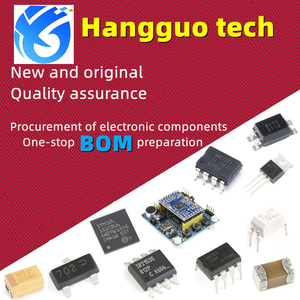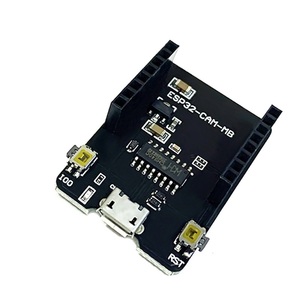(8167 products available)

































































































































































































The cam modules can be divided into the following types based on functionality:
Television Cam Modules
The tec camera module is used to troubleshoot and check the internal components of an electronic product or other product through its camera. It is usually attached to a flexible or semi-rigid endoscope tube that provides ease in accessing narrow and convoluted areas. The images and videos are transmitted by the cam module, which allows for detailed observations without disassembly.
Engineering CAM Modules
Cam modules in the engineering and design fields are mostly used for computer-aided modeling. These modules enable the creation of complex 3D structures/models, which incorporate diverse physical and operational characteristics of an item. CAM tools can be used to switch from design to manufacturing by offering the means to produce the designed items electronically.
Opto-Electronic CAM Modules
Opto-CAT cam modules have images (or information) obtained by using optical means and shared with electronic systems. They are pertinent to the automatic outcomes, such as changing the outcome, or give detailed disease detection in the medical section. These are important in MDIs due to their accuracy, diagnostic capability, and versatility.
Mechanical CAM Modules
These are the mechanical cam modules for non-electronic equipment, which are paired with some components in the system to facilitate the generation of some movements or actions. In fact, this is no longer prominent today since the development of more sophisticated electronic CAM modules, the mechanical CAM modules are still used in some simple machines.
Camera Modules
These CAM modules primarily focus on image capturing, with image sensors/circuitry incorporated into the module to process and transmit captured images. The camera module is normally used within surveillance systems as a part of IoT devices and for still image and video in mobile phones, tablets, and digital cameras.
CAM modules have the following key features:
High Sensitivity
The sensitivity of the cam modules allows it to pick up faint or low-light signals over a vast range of light frequency. This is a measure of the capability of an imaging-illuminating device to render proper images in dim light. Sensitivity increases with an increment in application area, such as surveillance, medical imaging, and photography.Due to the sensitivity factor, imaging internal fluids in the body or looking at stars is also possible.
Streamlined Processes
Over time, CAM components can streamline and automate processes. In manufacturing, for example, CAM operates CAD (Computer Aided Design) input systems to produce such products directly, eliminating the need for manual producing. This not only cuts labor costs but also makes the production process relatively faster.
Real-Time Data Transfer
Cam modules transfer data in real-time, allowing for the immediate analysis of images, videos, or diagnostic results. This is especially important for surveillance or telemedicine, where quick responses are necessary. Live transmission capabilities add to the functional versatility of CAM in different activities.
Enhanced Accuracy
Cam modules normally provide high precision in their process. For instance, in medical imaging, in-camera equipment such as endoscopes or cat camera modules give doctors a clear, live view of internal body parts. This is also the case with other areas wherein its technology is applied, such as reconnaissance and photography.
Versatility
CAM modules are designed to interact with many other instruments or systems. These are the camera modules used in devices such as smartphones, medical instruments, and so on. This versatility makes it easy to apply cam modules in several industries and areas.
The cam modules can be used commercially in the fields below:
Medical Imaging
Cam modules are used in the field of medical imaging, such as endoscopes that help capture live images of internal body components. The cam module provides high sensitivity and clarity for diagnosis, thus allowing medical personnel to do internal examinations without invasive procedures.
Security and Surveillance
CAM components are widely used in the security industry, from traditional CCTV surveillance to modern IoT-based smart cameras. Cam modules like the cat cam module provide clear, real-time monitoring of areas and help prevent and respond to threats.
Photography and videography
Modules are important in digital photography and videography. Be it reflex cameras or compact devices or smart phone cameras; the CAM modules support the creation of images and videos. High-resolution cam modules enhance the quality of photographs and videographs, making them ideal for professional and personal use.
Aerospace and Defense
In the area of reconnaissance and surveillance, CAM modules are important tools for imaging and mapping. They are used to capture detailed photographs of terrain and other areas of interest with precision in activities such as military operations, allowing for better strategic planning and decision-making.
Industrial Inspection
Industries employ CAM modules to inspect machinery and products during production. By using the Cam module, which is able to detect anomalies and defects, the quality assurance and maintenance measures are upgraded in manufacturing industries, which is important in keeping efficiency and safety standards.
Robotics
Cam modules are fitted into robots, such as autonomous vehicles and drone systems, in order to enhance their capability to perceive the environment. The cam modules usually help in navigating, mapping areas, and performing various operations with greater precision.
Several factors equal importance when choosing a CAM module:
Purpose
Clarifying the purpose of the module is important in making the right decision. Different systems have different CAM modules; for example, a computer CAM module must have a high-resolution image capability, while an industrial module CAM module must be able to bear extreme temperatures and stress.
Compatibility
Check the system where the CAM module will be used to make sure such a module is compatible with it. For instance, a camera module that works with a given software may not work with another software. This usually applies in such areas as technical equipment, like software and hardware integration.
Specifications and Features
When selecting a CAM module, it is essential to consider its functional and specification-related features. In regard to camera modules, it is necessary to check the resolution, frame rates, and sensitivity, among other things. Other mechanical systems may require certain features, like durability, precision, or speed, which are essential. The components like mechanical parts or optical elements should be evaluated to ensure the intended application of the system meets the requirement.
Quality and Reliability
The quality and reliability of the CAM are of utmost importance, as it affects the outcome. Choose CAM modules from reputable manufacturers with industry-accredited devices in stock and ready to ship. It ensures that the equipment used has consistently given accurate results and is capable of performing under various conditions.
Cost
Cost is another factor to consider when selecting the CAM module. Although price might be an important factor to consider, it should be noted that the features, quality, and compatibility of the software and hardware components are more important. It is, therefore, worthwhile to balance the cost against the functionality and dependability required for the task at hand.
It is defined as a component used in various systems to capture images, process data, or provide mechanical actions. Depending on the system, CAM modules can employ optical, mechanical, or electronic means, especially in engineering and medical sections.
They provide a means of viewing body organs and tissues. For example, a cam module allows doctors to see internal components of the body without open surgery. The clarity, sensitivity, and real-time feedback of these modules make them indispensable for diagnosis.
A CAM module is an integrated part of a system for professional use, while a normal camera is mainly used for personal photography. For instance, a thermal camera module might be used in medical or industrial inspection, which is specialized. Normal cameras are mainly used for photography, with most camera phones having niight mode for capturing images in low light.
When choosing a CAM module, the purpose, compatibility, specifications, and quality are all critical factors. The intended use of the module should mean that it should be compatible with the system it will be integrated into, and the quality should be ensured to provide dependable performance, like low light with niight mode.
CAM modules are used in medical imaging, security systems, industrial inspections, photography, aerial surveillance, and robotics. In these areas, the CAM modules provide vital imaging and data processing capabilities that improve performance and efficiency in the health sector.